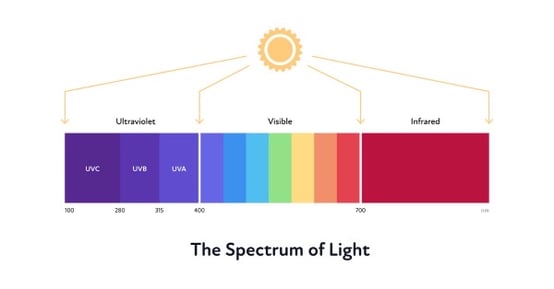Sunglasses and UV Protection
.png)
As most know by now, June 27th is National Sunglasses Day. I am pretty sure that most of us are not planning a big cookout, family time, and presents. It does fall on a Tuesday which already has its own purpose. Who doesn't enjoy Taco Tuesday? I believe tacos cover 4 of the 5 major food groups, but I digress.
How do we make this day special? I would contend that we are in the business of helping people see and educating them on all things optical and ocular. Both the good and the bad. UV protection is no longer the hot button it used to be. It has been replaced by harmful blue light protection and reduction.
While there is still much to learn when it comes to harmful blue light we pretty much know that overexposure to UV is dangerous to both our eyes and skin. Our patients know this and will appreciate your recommendations regarding UV protection.
The Basics of Ultraviolet Light
There are three types of UV light, A, B, and C. UVC is the most dangerous as it has the highest energy, but it is mostly blocked by the Earth's ozone layer so we don't need to be too concerned with it.
UVA emits the least amount of energy and is known to cause aging of the skin. Wrinkles and sunspots are the most common long-term effects of UVA but are also linked to some skin cancers.
most common long-term effects of UVA but are also linked to some skin cancers.
That leaves us with UVB. UVB emits slightly more energy than UVA and damages DNA directly causing sunburns and UV-related cancers.
The scary part is that UV light penetrates eye tissues more easily than visible light. This increases the potential for UV-related eye problems.
Eye Problems Linked to UV Exposure
According to the National Eye Institute website, there are numerous eye problems that are directly linked to UV exposure.
Pinguecula - Protein and fat deposit in the sclera (white part of the eye). Causes irritation and in rare cases affects how tears cover the eyes.
Pterygium - Also known as Surfers Eye, is a growth that extends from the sclera to the cornea covering the iris and pupil.
Cataract - Clouding of the eye's lens. Prolonged exposure to UV really modifies lens proteins leading to cataract formation. Over time, cataracts rob the patient of clear vision and brightness, which fades colors.
Cancer - Cancers of the eyelid, including basal cell carcinoma, and squamous cell carcinoma are linked to UV exposure. Please note that no link has been made between UV exposure and other types of ocular cancers.
Age-related macular degeneration (AMD) - Some studies have indicated that prolonged UV exposure without protection increases the risk for AMD.
How to Make a Difference
Educate your patients on the importance of both UV protection in their daily wear glasses and the need for good sunglasses. Wearing a hat and sunglasses during outdoor activities heavily reduces UV exposure and makes for a comfortable day.
Wrap-style sunglasses offer the best protection as they will block light from coming in around the lenses. Make sure to offer polarized lenses as they offer the best overall protection with the benefit of reduced surface glare. No one who spends time on the water should be without a wrap frame with polarized lenses.
Start young. I was at my granddaughter's soccer game and there was a boy on the opposing team wearing sunglasses. Keep in mind that this was a group of 7 and 8 years olds so the shades were not a fashion statement. It got me thinking that there was a parent who was either also in our industry or who had done their homework and understood the dangers of unprotected eyes in children.
statement. It got me thinking that there was a parent who was either also in our industry or who had done their homework and understood the dangers of unprotected eyes in children.
Studies show that children receive about three times the annual adult dose of UV and should wear sunglasses to protect their eyes when spending time outdoors. This is information that we should be sharing with our patients.
All month long we will be sharing posts on social media regarding National Sunglasses Day. Please follow us and share our posts. Let's get together and make a difference this year.
Happy National Sunglasses Day! Celebrate good vision!

